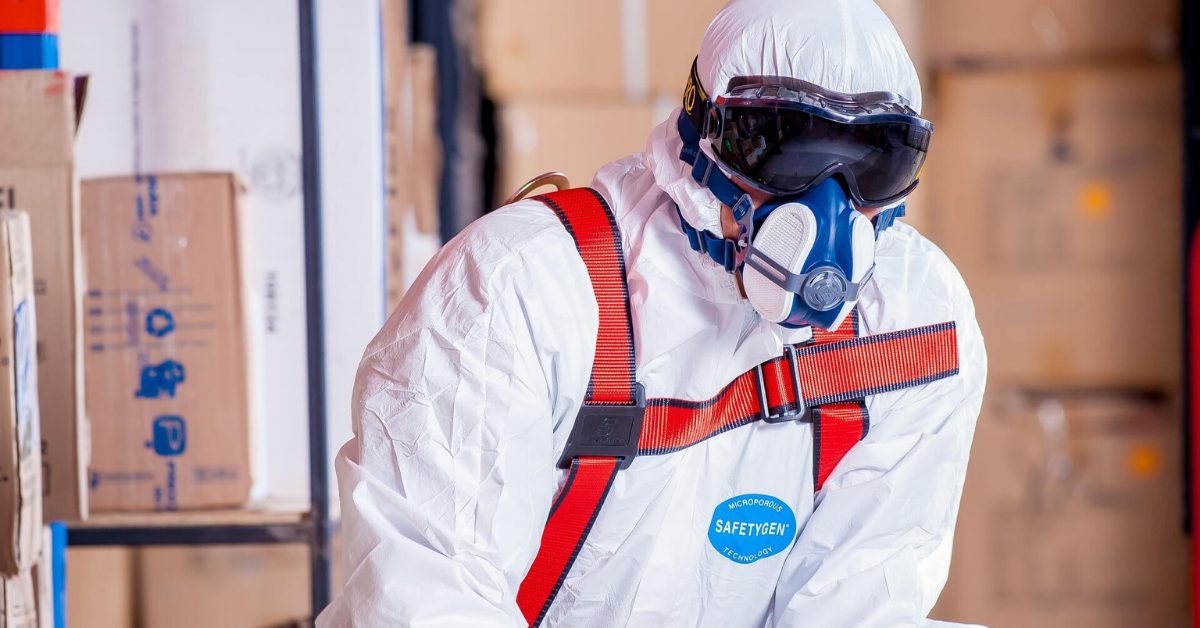Despite the fact that the industrial workplace has become less chemical-dependent over the last several decades, there are still industrial hygiene hazards in the workplace that should be addressed to assure a hazard-free workplace. So what exactly is industrial hygiene?
Despite the fact that the industrial workplace has become less chemical-dependent over the last several decades, there are still industrial hygiene hazards in the workplace that should be addressed to assure a hazard-free workplace. So what exactly is industrial hygiene?
According to the American Industrial Hygiene Association (AIHA), industrial hygiene is defined as a science that is devoted to the “anticipation, recognition, evaluation, prevention, and control of any factors that may cause sickness, impaired health and well-being, or significant discomfort among workers or among citizens of the community”.
The steps involved in the process of anticipation, recognition, evaluation, prevention, and control are really nothing more than sophisticated problem-solving, regardless of the area of endeavor.
The same process can be applied to a manufacturing process, a shipping and receiving department, or even the finance department where you work. It is the steps in the process that are important and not the area of endeavor.
Anticipation
In the field of industrial hygiene, an industrial hygienist is trained and skilled in the nature of IH hazards and where they may occur.
Before an IH surveys a particular type of process or facility for IH hazards, it is helpful for them to know what the processes are and, therefore, what types of hazards to anticipate.
If an industrial hygienist is going to survey a sawmill, it is reasonable to anticipate that noise will be an IH hazard they will encounter. If that is the case, they should be prepared to bring the proper instrumentation so they can properly assess the degree to which a noise hazard exists.
Recognition
The recognition step in the process is the step where the industrial hygienists determine where the hazard is present that they anticipated in the first place.
An IH that has surveyed many sawmills, should know just where to look for the noise exposures that may be dangerous. The thought process for the IH is, “I think there will be noise exposures in this sawmill in these areas,” (i.e. anticipation).
The Recognition step is when they do find it in the areas they suspected and perhaps some areas that they did not. This step is much harder when it comes to identifying other types of IH hazards. Noise is very obvious to anyone entering a sawmill. Other IH hazards such as asbestos, silica, ergonomics, and harmful chemicals are not as obvious and call for a great deal of knowledge on the part of the industrial hygienist.
Evaluation
This is the process of making a judgment to answer the questions of “does a hazard exist?” and “to what degree does it exist?”
It is relatively easy, sometimes, to determine that a hazard is “present.” In the case of noise, it is easy to hear that there is noise present. It is entirely different to determine if the noise levels are at a hazardous level and, in most cases, that can only be determined by testing to determine the employee’s level of exposure.
In some cases, the evaluation is done by interviewing the worker and then observing them as they perform their work as is the case with some Ergonomic hazards.
In general, the Evaluation step is the one where the IH determines the degree of exposure to the hazard for comparison against regulatory standards, such as those enforced by the Occupational Safety and Health Administration (OSHA) or other groups such as the American Conference of Governmental Industrial Hygienists (ACGIH) or the National Institute for Occupational Safety and Health (NIOSH).
Prevention
This step is where the IH tries to determine if there is even a need for the worker to be exposed to the hazard in the first place. He may look at alternative processes or chemicals that could be used so that the hazardous chemical is replaced.
There may be a different process altogether that will still do the job but without the exposure to a worker. It is always preferred that the hazard be eliminated through these types of efforts rather than to try to minimize the exposure through traditional means such as personal protective equipment (PPE) since PPE is only effective if it is used and used properly.
Control
This is the last step in the process. Once the degree of hazard has been determined, a decision needs to be made as to how to minimize or control the exposure if it is too high and that by not controlling it, the worker will suffer sickness, impaired health, and well-being, or significant discomfort.
The typical controls that have been historically used to protect workers are PPE such as gloves, safety glasses, respirators, and protective clothing. In some cases, exhaust ventilation may be installed or the operation that is creating the exposure will be enclosed and ventilated.
The idea of this step is to control the exposure the worker “was” receiving through the use of PPE or engineering-type controls, rather than to eliminate the exposure altogether.
About The Lawson Group
The Lawson Group has been around since 1978, offering services that help employers create a safer and healthier work environment. Do you have questions about how you improve your workplace's safety? Don't hesitate to contact us today for more information.







